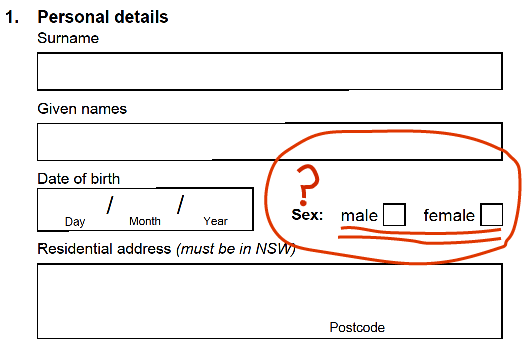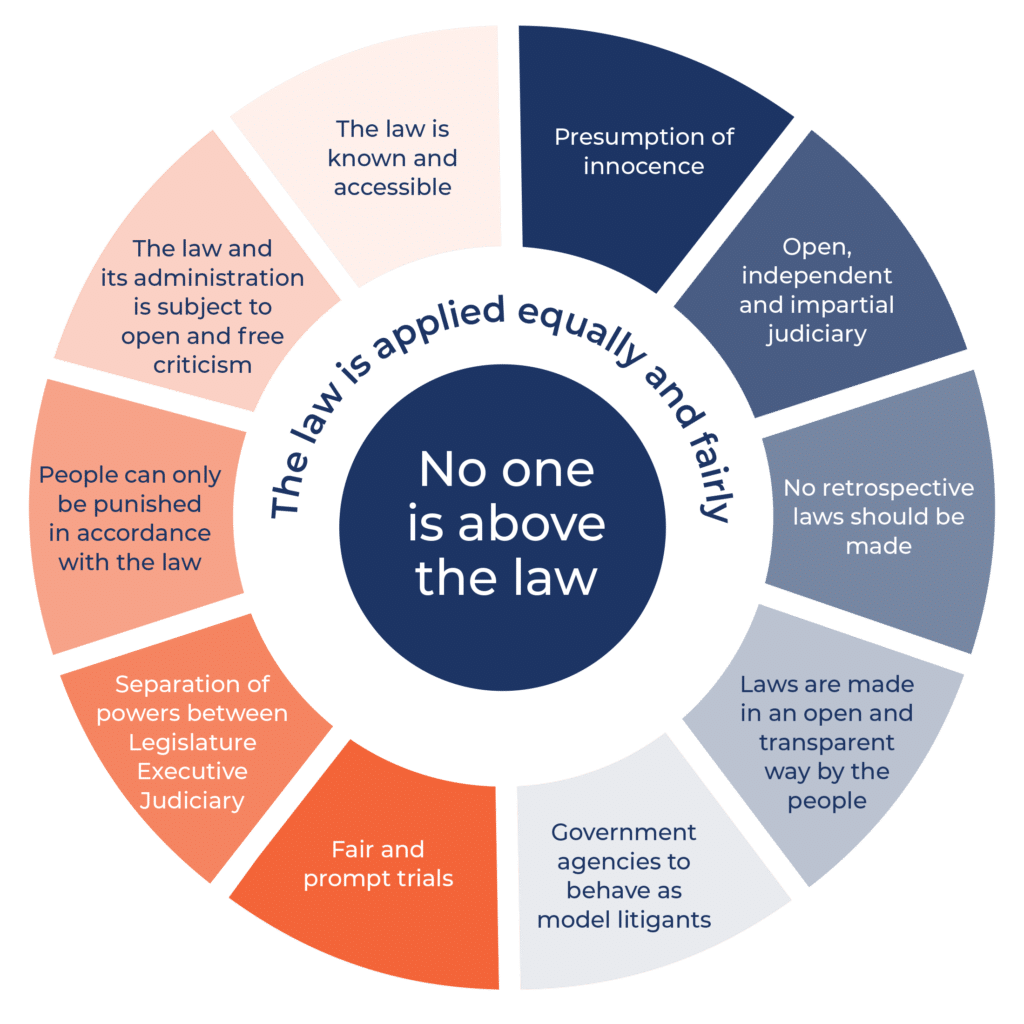The High Court of Australia, as the highest appeal court, is a bulwark of the rule of law in Australia. Its decisions can have wide-ranging implications and determine how legislation is to be interpreted in the context of the particular case. The High Court is the ultimate check on the power of the executive and the legislature. Its existence promotes access to justice and a fair, stable and certain legal system under the rule of law. The Rule of Law Institute believes that an understanding of High Court decisions is important to the community as those decisions demonstrate the rule of law in action.
Norrie v NSW Registrar of Births, Deaths and Marriages [2014] HCA 11
Today, 2 April 2014, the High Court handed down its decision in the long-running litigation between Norrie and the NSW Registrar of Births Deaths and Marriages in NSW Registrar of Births, Deaths and Marriages v Norrie [2014] HCA 11 (2 April 2014). Norrie was born with male reproductive organs and in 1989 underwent a “sex affirmation procedure”. That procedure is defined in section 32A of the Births, Deaths and Marriages Registration Act 1995 as a surgical procedure which is carried out either to assist a person be considered as a member of the opposite sex or “to correct or eliminate ambiguities relating to the sex of the person”.

Applicants for a NSW licence must indicate their sex on their application form. However, the Road Transport (Driver Licensing) Regulation 2008 (NSW) which sets out the information to be recorded int he NSW drive livence register requires the person’s gender. (link)
According to Norrie, the procedure did not resolve her sexual ambiguity so she applied for her sex to be registered under the Act as “non-specific”. Included in her application were statutory declarations from medical practitioners supporting her application.
The Registrar rejected the application, saying that the Act only contemplated for a person to be registered as “male” or “female”, not “non-specific” or any other category of sex such as “transgender” and that it would be “inconvenient” otherwise. The argument then proceeded through the NSW Administrative Decisions Tribunal to the Supreme Court and finally to the High Court.
In a unanimous judgment, the High Court disagreed. The Court noted that the reference to “ambiguities” in section 32A of the Act showed that the Act recognised that a person’s sex could be neither male or female. As for the Registrar’s argument that there would be unacceptable confusion if the Act recognised more than two categories of sex, the Court said that confusion would only result when legislation “requires a person is classified as male or female for the purpose of legal relations”. It said that generally speaking, gender is irrelevant to legal relations, with the significant exception of the Marriage Act 1961 (which defines marriage as “the union of a man and a woman to the exclusion of all others, voluntarily entered into for life”). Moreover, if another Act did distinguish between male and female, then that other Act would prevail so that the person would not be left in “legal no-man’s land”.
According to the Court, “the Act does not require that people who, having undergone a sex affirmation procedure, remain of indeterminate sex, that is, neither male not female – must be registered, inaccurately, as one or the other”.
In this decision, the Court was influenced by the fact that the Act allowed for the possibilities of gender “ambiguities” in the wording of section 32A. However, in other situations where legislation requires information about the gender of a person, and the tick box on the government form that results from that legislation only offers a male/female choice, the decision may mean that a person can describe themselves as being of another gender, such as “transgender” if they can provide some proof of that. So, for example the Regulation 103 of the Road Transport (Driver Licensing) Regulation 2008 (NSW) which requires the NSW Roads and Traffic Authority to maintain a register states that for a drivers licensing purposes, a person’s gender has to be recorded – not whether they are male or female. However, the RTA driver’s licence form requires the person applying for a driver’s licence to cross the box for either male or female. Whether other choices should be offered, or whether a form would be invalid if a person wrote on it “non-specific” or “transgender” is not clear.
~ Kate
 Kate Burns is RoLIA’s Chief Executive Officer. Join the discussion about rule of law issues on Twitter @RoLAustralia.
Kate Burns is RoLIA’s Chief Executive Officer. Join the discussion about rule of law issues on Twitter @RoLAustralia.

